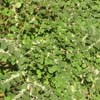
Extremes in topography and elevations account for the great diversity of plant life to be found within Bluestone National Scenic River. The 1,000 deep gorge created by the Bluestone River presents a variety of habitats and microclimates for flora and fauna. The vegetation of the park is characterized by extensive upland deciduous forests and mixed conifer-deciduous forests, with smaller areas of floodplain and riparian forest. Northern hardwood forests found at the higher elevations (above 2,000') consist of sugar maple, red maple, beech, yellow birch, basswood, and white pine. Lower elevation forests (below 2,000') consist of central hardwood forest trees such as red and white oak, tulip poplar, ash, hickory, sliver maple, elm, box elder, white pine, and Virginia pine, with flowering dogwood and witch hazel forming much of the undergrowth. Floodplain forests at the bottom of the gorge contain box elder, river birch, bitternut hickory, black walnut, and sycamore. Several plants have been found within the Bluestone Gorge that curiously do not seem to exist in the other major river gorges in the area (the New, Meadow, and Gauley Rivers). These distinctive plants include northern white cedar, downy arrowwood, Allegheny cliff fern, and wild onion. An unusual mix of northern and southern species are present in the Bluestone Gorge. This may be primarily attributed to the northward direction of flow that allows the Bluestone River to create a corridor which allows for migration of southern species. 
Invasive Species |
Last updated: February 26, 2015
